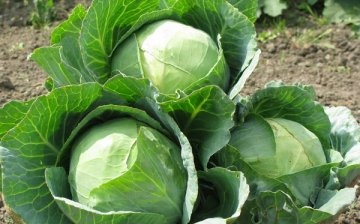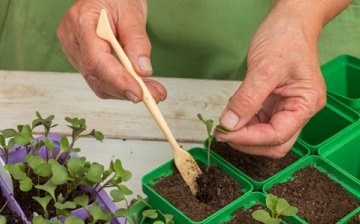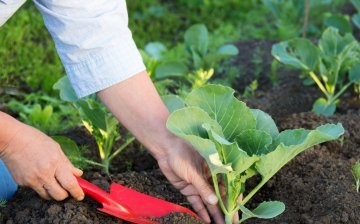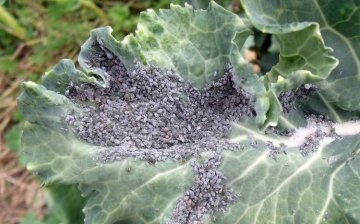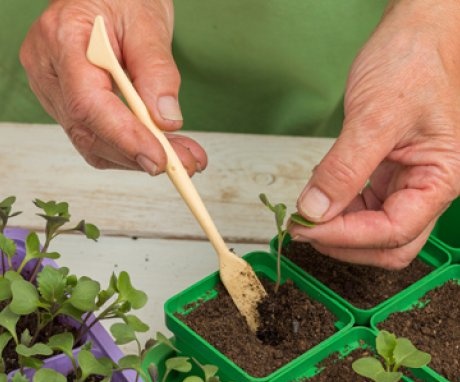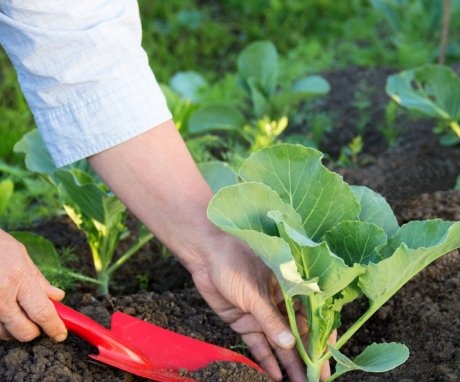Early Parel Cabbage: Growing Tips
"Parel" is a hybrid variety white cabbage (Brassica olerakea var. Capitata), which was bred by employees of a Dutch seed company. The variety was entered in the state register in the nineties. It quickly gained popularity, because it is suitable not only for summer cottage cultivation, but also beneficial for large-scale production - "Parel" gives a good and high-quality harvest even with thickened plantings.
The white-headed beauty of the garden is a treasure trove of vitamins and useful microelements. And in the "Parel" variety there is an increased content of vitamin C. Cabbage contains up to 12% of dry matter: sugar, starch, protein and fiber. Due to this, it is often used for medicinal purposes and is included in the diets of diets.
Content:
- What is the F1 hybrid
- How to grow the "Parel" variety correctly
- Transplanting seedlings into the ground
- The nuances of caring for cabbage
- What you need to protect the "Parel" variety
What is the F1 hybrid
Variety "Parel" is purposefully bred to get an early harvest. In a short growing season, which is 52-56 days, large bright green heads of cabbage are formed. The average weight of one vegetable head is 0.8 - 1.4 kg. And what is important, cabbage is distinguished by its massive uniform ripening.
The hybrid is characterized by compact round heads of dense structure, formed by large rosette leaves with a waxy coating. The edges of the leaves are even. The inner stalks are short or medium-sized, so there is little waste during the cooking process. The vegetable taste fully satisfies the needs of a larger number of customers.
In cooking, "Parel" is used fresh for preparing salads, added to the first and second courses, and also fermented for the winter. The F1 hybrid has an increased immunity to diseases and pests. The variety rarely blooms and cracks. Once ripe, cabbage can stand intact for about two weeks.
"Parel" is resistant to sudden changes in temperature conditions and grows equally well both in greenhouse conditions and in open ground.
Cabbage "Parel" won the love of farmers, thanks to its advantages. Among which:
- ultra early maturation
- beautiful presentation
- resistance to transportation
- high yield
- uniform mass ripening
- immunity to diseases
- high seed germination
- cracking resistance
In order for the body to receive the maximum amount of nutrients, it is recommended to eat the vegetable fresh.
How to grow the "Parel" variety correctly
It doesn't take much effort to grow cabbage, but some rules are still worth knowing and following. Disembarkation cabbage produced in two ways: seedling and seedless. To get quality vegetables, the main thing is to properly care for seedlings and control its growth.
The soil for the cabbage is prepared in advance. In the fall, before the onset of cold weather, the soil is dug up and, if necessary, brought in fertilizers.
Sow cabbage "Parel" must be no later than mid-March. Before planting seeds germinate... To do this, they are placed in a damp cloth and left in a warm place. In a few days, good quality seeds will sprout.
In order to prepare the soil for seedlings, you need to take turf, peat and sand in equal parts.
It is recommended to pour the substrate with a manganese solution. On the surface of the earth, landing grooves are made at intervals of three centimeters and a depth of one centimeter. Seed material is placed in them, sprinkled with soil and watered.
For successful growth, plants need to provide:
- Good lighting.
- The daytime temperature is 20-22 degrees, which is halved at night.
- Regular ventilation of the room, preventing air cooling.
- Watering plants with a manganese solution every seven days.
15 days after the emergence of sprouts, it is recommended to transplant the seedlings into separate containers. In this case, it is necessary to pay attention to the appearance of the cabbage in order to determine the choice of fertilizers. If the leaves are pale green, then fertilizing with nitrogen fertilizers is necessary. It should be moderate so as not to slow down the tying of the heads.
At the end of the seedling period, potash-phosphorus fertilizers are applied. Two weeks before transplanting into open ground, young plants need to be hardened by taking them outside. Seedlings are ready for planting in the beds at the age of 1.5-2 months. Before the procedure, the plants are examined and weak and diseased specimens are removed.
Transplanting seedlings into the ground
For planting, strong and healthy plants are chosen, which have already formed at least five leaves, the long roots are shortened. Such seedlings take root better and do not lose moisture.
It is better to choose a place after such cultures:
Cabbage should not be planted in last year's place, as well as after beets, tomato, radishes and turnips... The approximate time for transplanting the early Parela into the ground is mid-April or early May. The procedure is carried out in the morning or in cloudy weather. The seedlings are buried to the third cotyledonous leaf and the soil is well compacted so that there are no voids in the root area. Be sure to irrigate and sprinkle with dry earth.
After planting, the aisles must be loosened. Parel cabbage should be planted in rows, the distance between which is about 30 cm.
The nuances of caring for cabbage
Caring for Parel cabbage consists of irrigation, loosening of the soil, fertilizing and protection from diseases and harmful insects. In general, all care is conditionally divided into several stages:
- The first phase is the appearance of the first leaves. This is a time of special care. As necessary, replanting of falling plants is carried out, dusting is carried out using wood ash or tobacco dust. This measure will protect the seedlings from the attack of the cruciferous flea and slug. Irrigation in this phase is carried out once every one and a half weeks. After each procedure, the soil is loosened. Top dressing consist in the introduction of nitrogen fertilizers, in the form of ammonium nitrate.
- The second phase lasts until the heads are formed. Top dressing is carried out the same. Continue regular watering and loosening. However, at this time, you should take care of the health of future fetuses. It is advisable to fight pests without the use of chemicals, using traditional methods. With the beginning of the formation of heads of cabbage, the cabbage is fertilized with potassium nitrate (for 6 plants - 10 grams per 10 liters of water).
- The third phase is the thickening of the rows with leaves. Irrigation and loosening are preserved, and feeding is stopped.
What you need to protect the "Parel" variety
The F1 hybrid is quite resistant to diseases and pests, but still it is worth monitoring her condition. Depending on the phase of development, cabbage can be attacked by:
- In the first phase: cabbage beetles, cruciferous fleas, cabbage flies and moths.
- In the second phase - cabbage whites.
- In the third phase - cabbage aphids and scoops.
The main diseases that can affect "Parel":
- blackleg - a fungus that causes stem rot
- keela - characterized by the appearance of growths and swellings on the cabbage
- pernosporosis - spots and plaque appear on plants
For the prevention of these ailments, it is recommended to sterilize the seeds at a temperature not exceeding 80 degrees. Decoctions and infusions on tomato tops, wormwood are used against harmful insects, yarrow, garlic and dandelion. If the lesions are extensive, then they resort to using systemic insecticides, provided that the harvest is carried out no earlier than two weeks later.
To obtain a bountiful harvest of beautiful and tasty Parel heads of cabbage does not require excessive efforts.
The process of growing a hybrid is quite simple - the main thing is to do everything in a timely manner and pay special attention seedlings, since this is the key to the health of an adult plant. The culture itself is unpretentious in care, rarely gets sick and is attacked by pests. In response to simple and rather familiar actions, farmers receive vitamin-rich vegetables in a short time.
More information can be found in the video:



